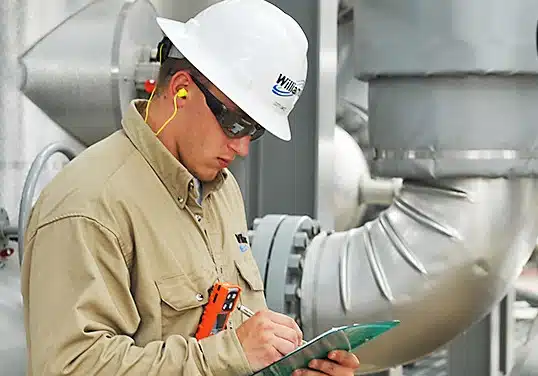1. Visual Inspection
- Method: Inspectors use magnifying glasses, mirrors, and sometimes borescopes (flexible cameras) to look closely at the weld seam.
- Application: Good for detecting surface defects like cracks, undercutting, and porosity.
2. Ultrasonic Testing (UT)
- Method: High-frequency sound waves are sent into the weld seam. The sound waves bounce back when they hit a flaw, creating an echo pattern that indicates the defect’s location and size.
- Application: Effective for detecting internal defects like lack of fusion, inclusions, and cracks.
- Visual: Imagine sending sound waves through a pipe and receiving signals that show a clear picture of the inside, just like a baby ultrasound.
3. Radiographic Testing (RT)
- Method: X-rays or gamma rays are used to create an image of the weld seam. Defects appear as dark or light areas on the radiograph.
- Application: Useful for detecting internal defects like porosity, inclusions, and cracks.
- Visual: Picture an X-ray of a broken bone showing a clear image of any fractures or irregularities.
Each method has its strengths and is suited to different types of defects, depending whether they are on the surface or within the weld.
4. Magnetic Particle Testing (MT)
- Method: The weld is magnetized, and iron particles are applied. The particles gather around defects, making them visible under ultraviolet light.
- Application: Best for detecting surface and slightly subsurface defects like cracks and lack of fusion.
- Visual: Think of sprinkling iron filings around a magnet. Any defect will disrupt the magnetic field, causing the filings to cluster around the flaw.
5. Dye Penetrant Testing (PT)
- Method: A dye is applied to the weld seam, which seeps into any cracks. After a period, the surface is cleaned, and a developer is applied to draw out the dye from the cracks, making them visible.
- Application: Effective for detecting surface defects like cracks and porosity.
- Visual: Imagine pouring ink on a cracked surface and seeing the ink seep into the cracks, making them stand out.
6. Eddy Current Testing (ET)
- Method: An electromagnetic coil induces eddy currents in the weld seam. Defects affect the flow of these currents, which is detected by the equipment.
- Application: Useful for detecting surface and near-surface defects like cracks and lack of fusion.
- Visual: Similar to a metal detector, where the presence of a defect changes the signal received by the detector.

